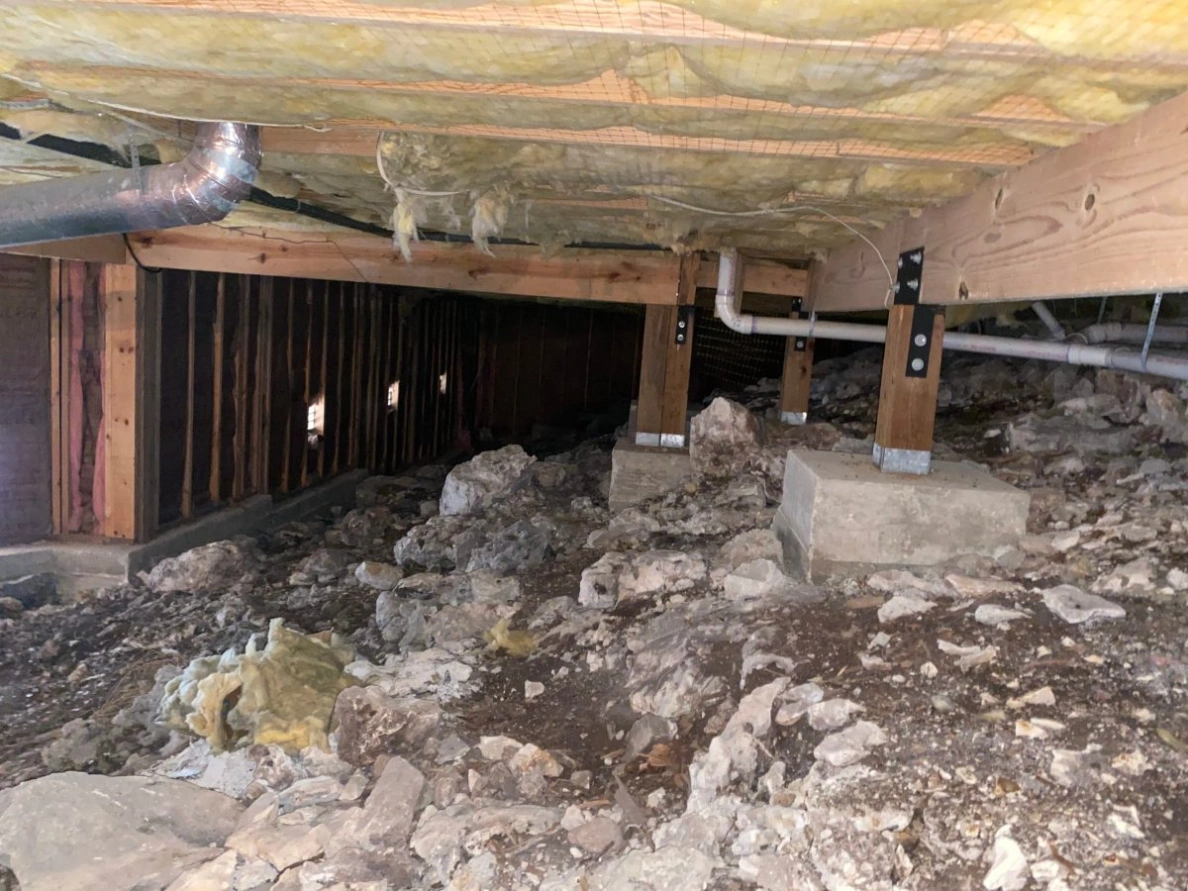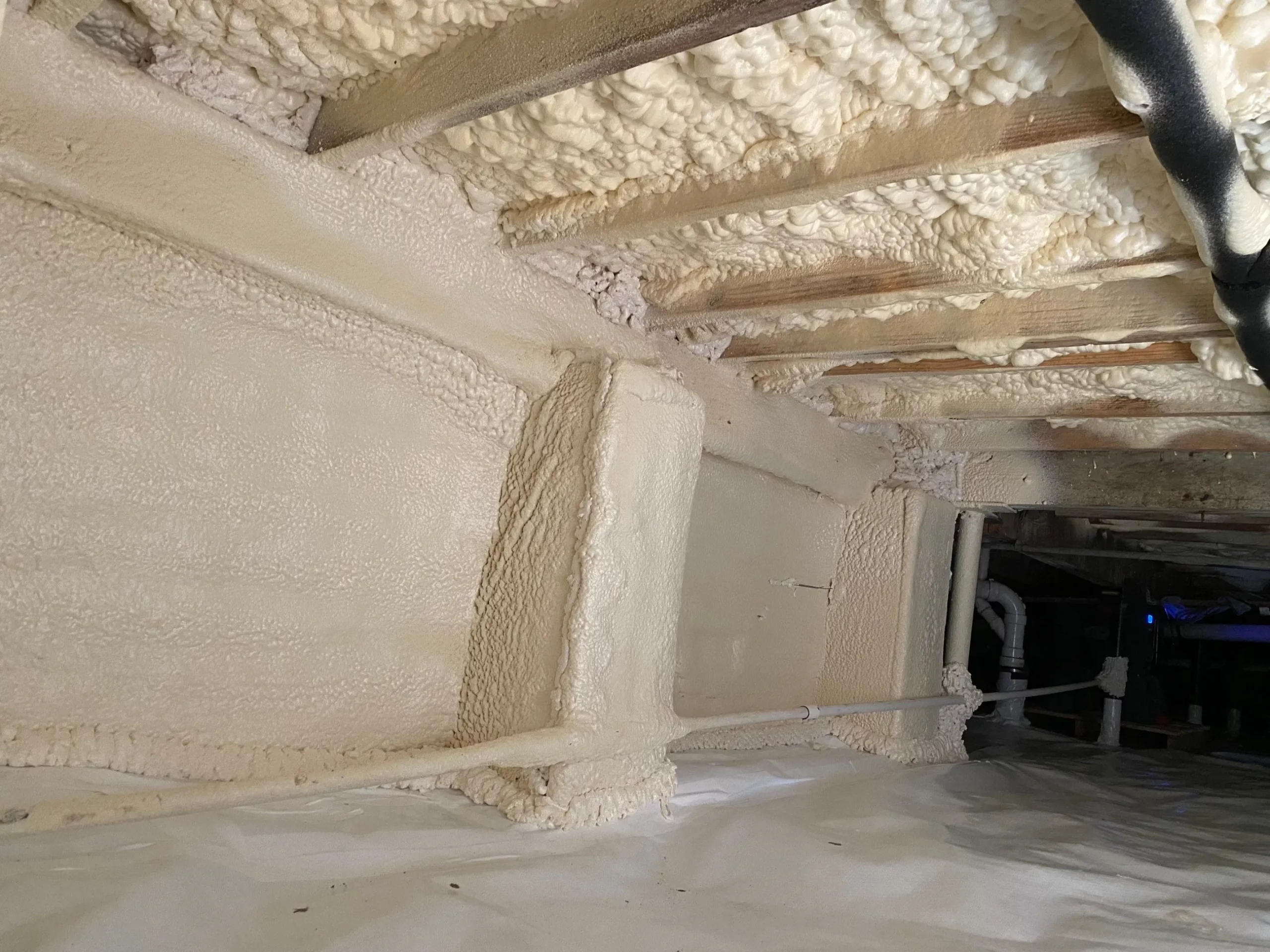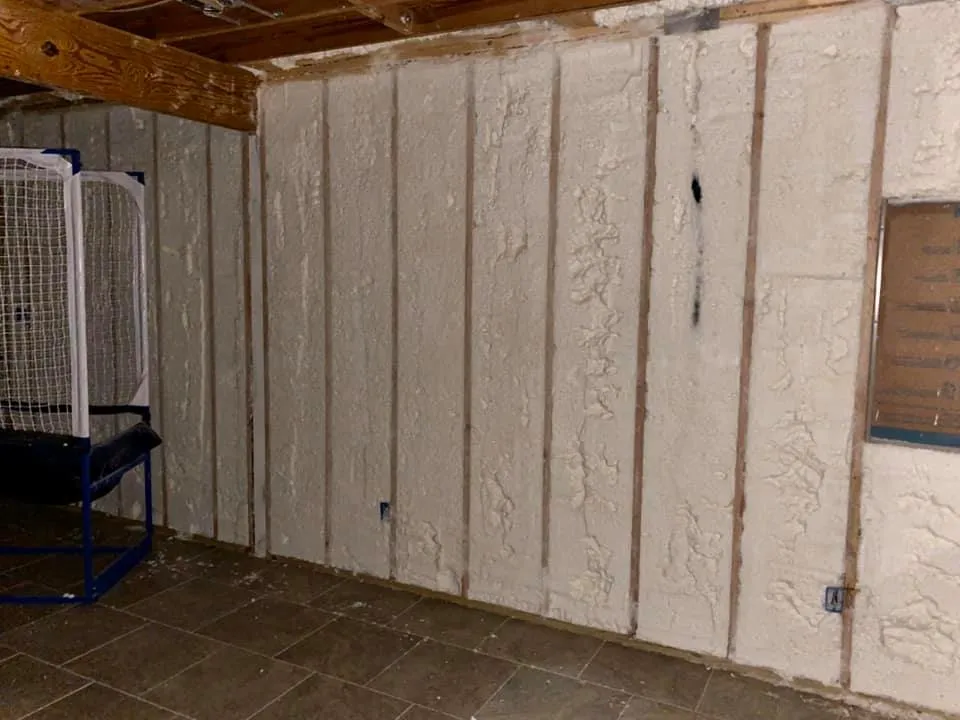Replace crawlspace insulation when moisture damage, pest infestation, or degraded thermal performance compromises your home’s energy efficiency and structural integrity. Critical replacement indicators include visible mold growth, sagging or compressed insulation materials, persistent moisture issues, and energy bills that have increased significantly despite consistent usage patterns.
Professional assessment reveals that crawlspace insulation typically requires replacement every 15-20 years under normal conditions, though environmental factors can accelerate this timeline dramatically. Damaged insulation loses up to 40% of its R-value within the first five years of moisture exposure, making prompt replacement essential for maintaining optimal home performance. Drawing from extensive field experience across diverse climate conditions, this comprehensive guide examines the specific warning signs, replacement timing, and decision factors that determine when crawlspace insulation has reached the end of its functional life.
Warning Signs That Demand Immediate Attention
Moisture-related deterioration represents the most common reason for premature insulation replacement. Water stains on insulation materials signal active or recent moisture intrusion, while musty odors emanating from the crawlspace indicate potential mold development. Compressed insulation loses its ability to trap air effectively, reducing thermal resistance and allowing temperature fluctuations that strain HVAC systems.
Pest activity creates another urgent replacement scenario. Rodent droppings, nesting materials, or chewed insulation compromise both the material’s integrity and indoor air quality. Animal contamination introduces bacteria and allergens that circulate through the home’s ventilation system, creating health risks that extend far beyond energy efficiency concerns.
Physical degradation manifests through crumbling fiberglass batts, deteriorating vapor barriers, or insulation that has pulled away from floor joists. These structural failures create thermal bridges that allow conditioned air to escape while permitting outside temperatures to penetrate living spaces above.
Bonus Tip: Schedule crawlspace inspections during seasonal transitions when temperature differences make thermal deficiencies most apparent through condensation patterns and air movement detection.
Performance Degradation Assessment
| Insulation Condition | R-Value Retention | Replacement Urgency | Expected Lifespan |
|---|---|---|---|
| Dry, intact fiberglass | 95-100% | Monitor annually | 15-20 years |
| Slightly compressed | 70-85% | Replace within 2-3 years | 10-15 years |
| Moisture-affected | 40-60% | Replace immediately | 5-10 years |
| Mold contamination | 20-40% | Emergency replacement | Immediate |
| Pest infestation | 30-50% | Replace within 30 days | Immediate |
Energy efficiency metrics provide quantifiable evidence for replacement decisions. Indoor temperature variations exceeding 3-4 degrees between rooms suggest compromised insulation performance. Increased heating and cooling runtime, measured through smart thermostat data, indicates that existing insulation can no longer maintain consistent thermal barriers.
Humidity levels above 60% in crawlspaces create conditions that accelerate insulation degradation while promoting mold growth. Relative humidity measurements taken at different crawlspace locations help identify problem areas where insulation replacement becomes most critical.
Material-Specific Replacement Timelines
Different insulation materials exhibit distinct degradation patterns that influence replacement scheduling. Fiberglass batts typically maintain effectiveness for 15-20 years in dry conditions but deteriorate rapidly when exposed to moisture. Cellulose insulation demonstrates superior moisture resistance but becomes less effective when settling occurs over time.
Spray foam insulation offers extended longevity, often lasting 25-30 years without significant performance loss. However, improper installation or structural movement can create gaps that require professional assessment and targeted repairs rather than complete replacement.
Bonus Tip: Document insulation installation dates and material specifications to establish baseline performance expectations and track degradation patterns over time.
Environmental Factors That Accelerate Replacement
Climate conditions significantly impact insulation longevity. High-humidity regions experience faster material degradation due to consistent moisture exposure, while areas with extreme temperature fluctuations stress insulation materials through repeated expansion and contraction cycles.
Crawlspace ventilation design affects insulation performance and lifespan. Inadequately ventilated spaces trap moisture and create conditions that promote mold growth, while excessive ventilation can reduce insulation effectiveness through air movement that bypasses thermal barriers.
| Climate Factor | Impact on Lifespan | Mitigation Strategy |
|---|---|---|
| High humidity (>70%) | Reduces lifespan by 30-40% | Dehumidification systems |
| Temperature extremes | Accelerates degradation 25% | Proper vapor barriers |
| Poor ventilation | Creates moisture issues | Balanced ventilation design |
| Coastal environments | Salt air corrosion effects | Moisture-resistant materials |
| Flood-prone areas | Immediate replacement risk | Elevated installation methods |
Things to Consider Before Making a Decision
Evaluate the overall crawlspace environment before committing to insulation replacement. Address underlying moisture problems, ventilation deficiencies, and structural issues that contributed to insulation degradation. Replacing insulation without correcting root causes leads to repeated problems and unnecessary expenses.
Consider upgrading to higher-performance materials during replacement projects. Modern insulation technologies offer improved moisture resistance, pest deterrence, and thermal performance compared to materials installed 10-15 years ago. Factor in long-term energy savings when evaluating material options.
Assess whether partial replacement addresses specific problem areas or if comprehensive replacement provides better value. Isolated moisture damage might require only sectional replacement, while widespread degradation typically justifies complete crawlspace insulation renewal.
Bonus Tip: Coordinate insulation replacement with other crawlspace improvements such as vapor barrier installation, pest exclusion measures, or HVAC ductwork maintenance to maximize project efficiency and minimize disruption.

Professional Crawlspace Insulation Services
Stellrr provides comprehensive crawlspace insulation solutions designed to address specific replacement needs and environmental challenges. Professional assessment identifies the most effective materials and installation methods for individual property requirements.
- Crawlspace Insulation Installation: Complete removal of damaged materials and installation of high-performance insulation systems tailored to climate conditions and structural requirements.
- Insulation Removal Services: Safe extraction of contaminated or degraded insulation materials with proper disposal protocols and preparation for new installation.
- Moisture Control Solutions: Integrated vapor barrier systems and ventilation improvements that extend insulation lifespan and prevent future degradation.
- Spray Foam Applications: Advanced closed-cell and open-cell spray foam options that provide superior moisture resistance and long-term thermal performance.
Common Questions About Replacement Timing
Property owners frequently question whether visible insulation damage requires immediate attention or can wait for scheduled maintenance periods. Any signs of mold growth, pest contamination, or significant compression demand immediate replacement to prevent health risks and further property damage.
Energy bill increases often prompt insulation evaluation questions. Heating and cooling costs that rise 15-20% without corresponding rate increases or usage changes typically indicate compromised insulation performance requiring professional assessment.
Replacement material selection generates numerous inquiries about performance differences and longevity expectations. Modern insulation materials offer enhanced moisture resistance and thermal performance compared to older products, justifying upgrade investments during replacement projects.
Key Factors for Long-Term Success
Replace crawlspace insulation when performance degradation, moisture damage, or contamination compromises home comfort and energy efficiency. Monitor insulation condition annually through visual inspection and energy performance tracking to identify replacement needs before problems escalate.
Address environmental factors that contributed to original insulation failure during replacement projects. Proper moisture control, ventilation design, and material selection prevent recurring issues while maximizing new insulation performance and longevity.
Professional Assessment and Installation
Contact professionals for comprehensive crawlspace evaluation and expert insulation replacement services. Stellrr’s experienced team provides detailed assessments that identify optimal replacement timing and material selection for maximum performance and value.
Schedule your crawlspace inspection by calling (512) 710-2839 or emailing info@stellrr.com. Professional evaluation ensures accurate problem diagnosis and effective solutions that address both immediate replacement needs and long-term performance optimization.
Essential Information About Crawlspace Insulation Replacement
How long does crawlspace insulation typically last?
Quality crawlspace insulation maintains effectiveness for 15-20 years under normal conditions. Moisture exposure, pest activity, and extreme temperature fluctuations can reduce this lifespan significantly. Regular inspection helps identify early degradation signs before complete replacement becomes necessary.
What are the most reliable indicators that replacement is needed?
Visible mold growth, compressed or sagging insulation, persistent moisture problems, and unexplained energy bill increases signal replacement requirements. Musty odors, pest droppings, or insulation that has pulled away from surfaces also indicate immediate replacement needs.
Can damaged insulation be partially replaced or does the entire crawlspace need new insulation?
Isolated damage from specific moisture events or pest activity may require only sectional replacement. However, widespread degradation or contamination typically necessitates complete crawlspace insulation renewal to ensure consistent performance and prevent future problems.
How does climate affect replacement timing?
High-humidity environments and extreme temperature variations accelerate insulation degradation. Coastal areas with salt air exposure and regions with frequent flooding may require replacement every 10-12 years instead of the typical 15-20 year timeline.
What factors should influence material selection during replacement?
Consider moisture resistance, pest deterrence, thermal performance, and expected lifespan when selecting replacement materials. Climate conditions, crawlspace ventilation, and budget constraints also influence optimal material choices for long-term effectiveness and value.





